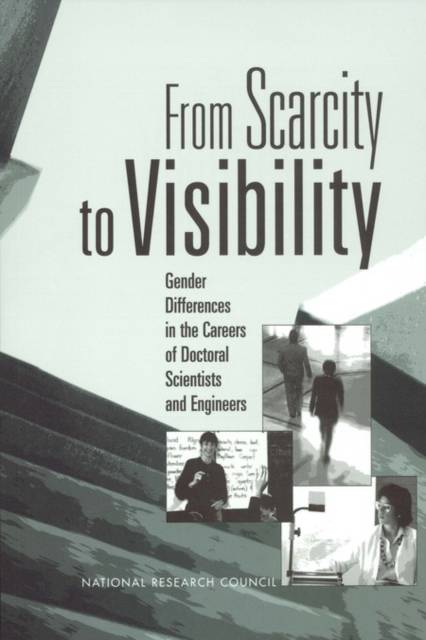
Bedankt voor het vertrouwen het afgelopen jaar! Om jou te bedanken bieden we GRATIS verzending (in België) aan op alles gedurende de hele maand januari.
- Afhalen na 1 uur in een winkel met voorraad
- In januari gratis thuislevering in België
- Ruim aanbod met 7 miljoen producten
Bedankt voor het vertrouwen het afgelopen jaar! Om jou te bedanken bieden we GRATIS verzending (in België) aan op alles gedurende de hele maand januari.
- Afhalen na 1 uur in een winkel met voorraad
- In januari gratis thuislevering in België
- Ruim aanbod met 7 miljoen producten
Zoeken
From Scarcity to Visibility
Gender Differences in the Careers of Doctoral Scientists and Engineers
National Research Council, Policy and Global Affairs, Committee on Women in Science and Engineering, Panel for the Study of Gender Differences in the Career Outcomes
Paperback | Engels
€ 90,45
+ 180 punten
Omschrijving
Although women have made important inroads in science and engineering since the early 1970s, their progress in these fields has stalled over the past several years. This study looks at women in science and engineering careers in the 1970s and 1980s, documenting differences in career outcomes between men and women and between women of different races and ethnic backgrounds.
The panel presents what is known about the following questions and explores their policy implications: In what sectors are female Ph.D.s employed? What salary disparities exist between men and women in these fields? How is marital status associated with career attainment? Does it help a career to have a postdoctoral appointment? How well are female scientists and engineers represented in management?
Within the broader context of education and the labor market, the book provides detailed comparisons between men and women Ph.D.s in a number of measures: financial support for education, academic rank achieved, salary, and others. The study covers engineering; the mathematical, physical, life, and social and behavioral sciences; medical school faculty; and recipients of National Institutes of Health grants.
Findings and recommendations in this volume will be of interest to practitioners, faculty, and students in science and engineering as well as education administrators, employers, and researchers in these fields.
The panel presents what is known about the following questions and explores their policy implications: In what sectors are female Ph.D.s employed? What salary disparities exist between men and women in these fields? How is marital status associated with career attainment? Does it help a career to have a postdoctoral appointment? How well are female scientists and engineers represented in management?
Within the broader context of education and the labor market, the book provides detailed comparisons between men and women Ph.D.s in a number of measures: financial support for education, academic rank achieved, salary, and others. The study covers engineering; the mathematical, physical, life, and social and behavioral sciences; medical school faculty; and recipients of National Institutes of Health grants.
Findings and recommendations in this volume will be of interest to practitioners, faculty, and students in science and engineering as well as education administrators, employers, and researchers in these fields.
Specificaties
Betrokkenen
- Auteur(s):
- Uitgeverij:
Inhoud
- Aantal bladzijden:
- 336
- Taal:
- Engels
Eigenschappen
- Productcode (EAN):
- 9780309055802
- Verschijningsdatum:
- 16/11/2001
- Uitvoering:
- Paperback
- Formaat:
- Trade paperback (VS)
- Afmetingen:
- 154 mm x 228 mm
- Gewicht:
- 539 g

Alleen bij Standaard Boekhandel
+ 180 punten op je klantenkaart van Standaard Boekhandel
Beoordelingen
We publiceren alleen reviews die voldoen aan de voorwaarden voor reviews. Bekijk onze voorwaarden voor reviews.









